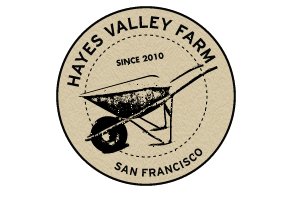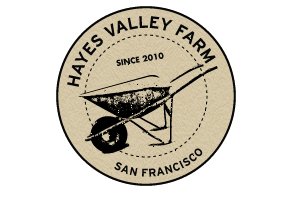 Hayes Valley Farm blooms in an abandoned concrete space; it is a 2.2 acre non-profit community run farm and urban agriculture education and research project.
Hayes Valley Farm blooms in an abandoned concrete space; it is a 2.2 acre non-profit community run farm and urban agriculture education and research project.
I live in Hayes Valley and there has been a transformation a few blocks down from where I live. The square surrounded by the streets of Oak, Octavia, Fell and Laguna used to be an ugly site. It has been a closed overpass since traffic was diverted to Octavia Boulevard. Now, Hayes Valley Farm blooms in this once abandoned concrete space – it is a 2.2 acre non-profit community run farm and urban agriculture education and research project that was given funding by the city and the San Francisco Parks Trust. It opened its gates to the community on January 24, 2010. It is open to the public and volunteers on Thursdays and Sundays.
The mission of Hayes Valley Farm, as stated on their website, “is to serve as a community and agricultural hub encouraging San Francisco residents to connect with one another, grow their own food, and learn about sustainable ecological systems.” Using a system of permaculture, the farm uses strategies for urban farming such as “using minimal inputs, upcycling local waste, replenishing the landscape, and maximizing community involvement and resources.” For example, the first thing done at the farm was to revitalize the soil through sheet mulching. “Sheet-mulching is a technique to build new, fertile soil. Cardboard is laid down to cover ivy and weeds and suppress their growth. It also prevents soil disturbance, absorbs water, and retains moisture”. After the cardboard is laid down, volunteers and farm staff add layers of manure and mulch three to four feet deep. Fava beans and clover are then planted to fix nitrogren in the soil which in turn balances out the carbon rich cardboard and mulch. The manure and mulch then transform into new rich soil that breaks down the cardboard.
Planting the Fava bean and clovers waere just the first step in the growing cycle at Hayes Valley Farm. Now produce such as squash, leafy greens, potatoes, and herbs are being grown. All the varieties of produce being planted grow well is San Francisco’s cool coastal climate.
